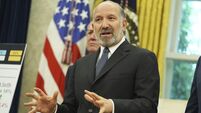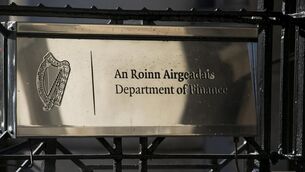Eurozone consumer inflation and Irish factory prices reignite fears about outlook

Irish inflation climbed to 8.2% in May and consumer prices across the eurozone rose by a record, reigniting the debate about whether the European Central Bank will be forced to hike interest rates this summer more aggressively than it apparently wants.
The ECB will be closely watching the latest figures as a debate rages between doves and hawks in the central bank about how quickly to hike interest rates to counter inflation.
ECB officials, including president Christine Lagarde and chief economist Philip Lane — the former governor at the Central Bank of Ireland — have signalled for some time that the bank will likely increase rates in gentle moves in July and September, probably by a quarter point at each stage.
However, the latest eurozone inflation reading brought to the fore more hawkish ECB policymakers, who said that bigger interest rate increases may be justified.
Money markets increased their bets on future ECB tightening, discounting more than 1.15% by the end of the year, up from bets on 1.10% in recent days.
Any rate hikes will drive up the costs of home mortgages and business lending in Ireland.

Meanwhile, more evidence has emerged about the potential harm that inflation could do to the Irish economy, as the rate of growth in Irish factory output slowed dramatically in May. The latest AIB Purchasing Managers’ Index, or PMI, also showed backlogs of work at manufacturers declined for the first time in over a year.
“The easing in the pace of expansion reflects slower growth in output and particularly new orders, with some respondents saying that rising prices are weighing on demand,” said Oliver Mangan, AIB chief economist.
The latest eurozone figures will heighten concerns about inflation.
Consumer prices across the eurozone climbed to 8.1%, up from 7.4% in April, as energy and food costs due to the war in Ukraine contributed most to driving prices higher, according to the so-called flash or early estimate by Eurostat.
Ireland’s annual inflation in May was estimated at 8.2%, up from 7.3% in the previous month, and close to the eurozone average. Estonia had the highest inflation in May at just over 20%, and Malta the lowest at 5.6%.
The flash estimates by Eurostat are based on a harmonised basket of goods and services that makes inflation easier to compare across the eurozone.
The harmonised inflation rates have in the past run slightly higher than the country-specific measures, which in Ireland’s case, under the CSO’s consumer price index was running at 7% in April.
Many economists have projected Irish consumer price inflation will peak in the summer months at around 8% and then ease back.
However, Irish inflation is still projected to remain at relatively elevated levels through 2023, according to the forecasts.













